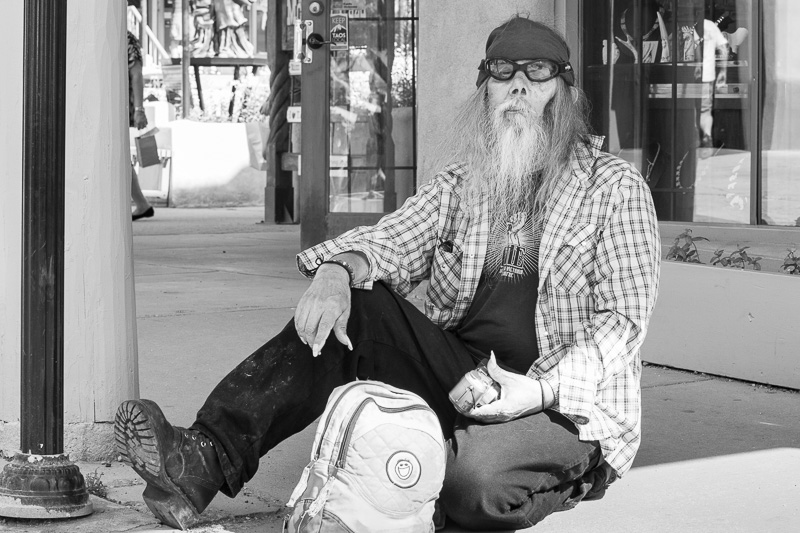Last Friday, I found myself in the town of Taos in New Mexico which was setting up for a weekend fiesta. According to Wikipedia, Taos is one of the oldest continuously inhabited communities in North America (more than a thousand years). Ostensibly, I was there on an excursion as part of a photography workshop, but more about that in later posts. For now, I want to introduce you to a fellow named Jim. He was sitting on a concrete veranda looking out into the town square, watching the people go by, doing nothing much in particular. At first, I avoided him because, well … he was kind of scary-looking. He wore a bandana and orange reflective goggles. He had a scraggly white beard, beads on his wrists, and had remarkable fingernails. But when I walked past (with my 70-200 mm zoom lens), he called out to me and asked if I was getting good shots. So I knelt on the concrete beside him and we chatted as we watched the people go by. Jim told me that he’s a Viet Nam vet. He told me that he’d been shot in the head while he was serving. Given the shape of of his head, I had no reason to disbelieve him. He said he was having trouble getting benefits he was supposed to be getting. As a Canadian, I don’t know anything about the U.S. military or what people who serve are entitled to, so I just listened. My general sense is that the experience of Viet Nam vets was (and continues to be) different than the experience of military personnel who serve today. The booth in the lot where we parked our van was covered in Rah Rah signs. I doubt we would have seen signs like that in 1975. There was a lot Jim said that I didn’t understand, but I did make out that he isn’t from Taos; he lives about 40 miles to the west and came there for the fiesta. If you look at his left hand, you’ll see that he’s holding a Canon point and shoot camera. He likes to take photos, which I guess explains why he called out to me in the first place. I guess carrying a camera can be a bit like a secret handshake: it’s a way to identify kindred spirits.
